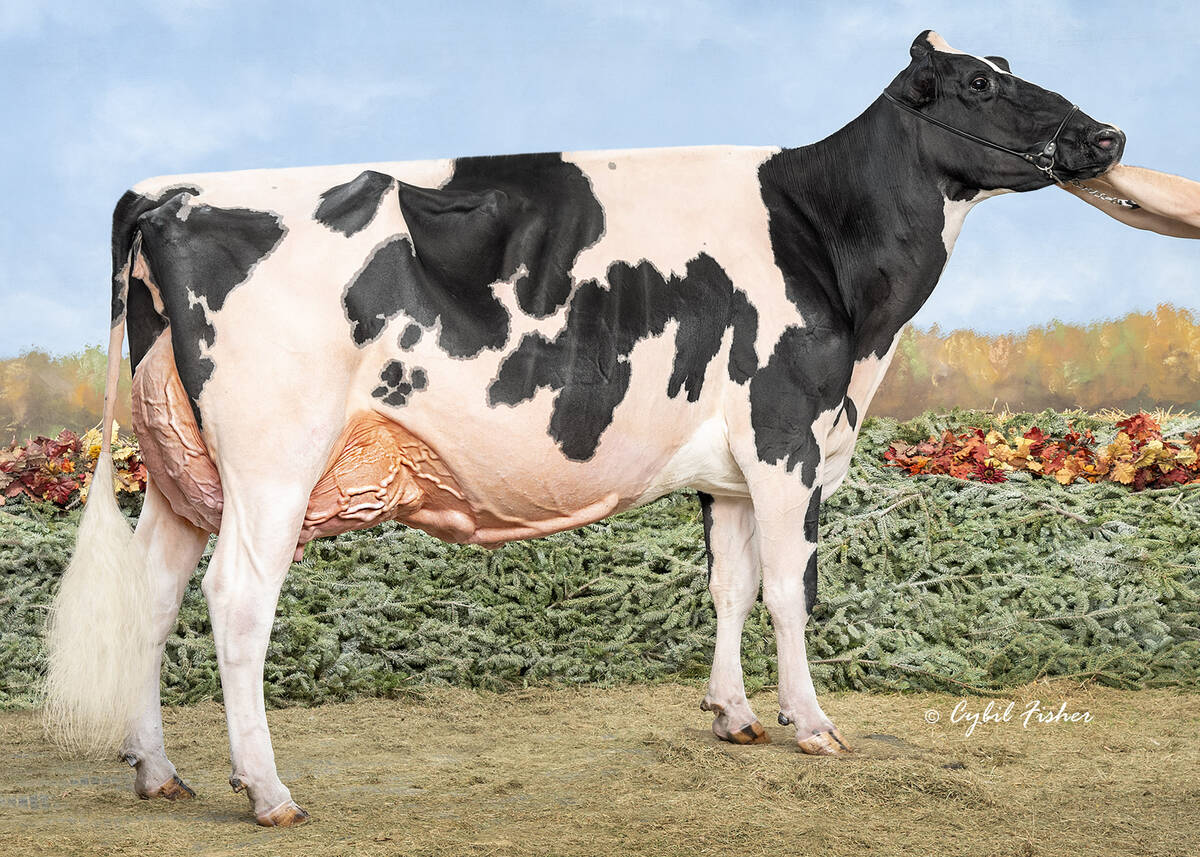BIG VALLEY, Alta. – When Pat Anderson opens the paddock gate, her
favourite brood mare Flo approaches for a friendly nuzzle.
Then with a gentle touch, Anderson applies a tool shaped like a
flashlight against Flo’s sore neck muscles, across her muzzle and
between her ears.
This is light therapy, an alternative treatment used on humans and
animals for pain relief.
“The light therapy speeds up the circulation and draws more blood to
the area and helps the healing process,” Anderson said.
Read Also

Saskatchewan dairy farm breeds international champion
A Saskatchewan bred cow made history at the 2025 World Dairy Expo in Madison, Wisconsin, when she was named grand champion in the five-year-old Holstein class.
Animals appear to respond immediately when the light pinpoints a
painful area.
“When you work that spot out, their eyes start closing and their heads
drop,” she said.
Employing light-emitting diodes, the light only feels warm in areas
where there is an injury. Red lights apply warmth and blue lights
provide cool therapy, similar to an ice pack, she said.
Anderson has worked with horses for more than 15 years. Her family owns
about 50 competitive reining horses, which sometimes injure themselves
on sharp turns and quick stops.
“You know what is wrong with them from the way they are stepping.”
A horse cannot tell the trainer where it hurts, but those who use
alternative treatments on their animals say there is evidence of
relaxation.
Anderson believes in holistic treatment for performance horses but also
knows her limitations, and calls the vet for serious cases.
She believes the therapy speeds healing and reduces pain from leg
injuries, arthritis, founder or cuts from barbed wire.
Anderson and her family have owned a Stettler, Alta., company called
Lightforce Canada since 1999. It sells light therapy tools to
non-professionals, as well as animal and human health-care providers.
Light therapy units range in size from a flashlight to a large
floodlight. Some are mounted on stands.
The treatment is more common in the United States, but it is starting
to gain acceptance here.
Light therapy has been used for nearly 100 years to treat a variety of
ailments. Women suffering post partum perineal injuries have received
light treatments to speed healing.
Phototherapy may use sunlight, non-visible ultraviolet light, visible
spectrum light or laser light. The premise for it is that the skin and
underlying tissue absorb the light, which increases oxygen flow, blood
flow, healing and muscle relaxation.
Treatments such as light therapy, acupuncture, magnetic treatments and
massage are controversial among veterinarians. Some dismiss
alternatives as hocus pocus, said British Columbia vet Jeff Grognet,
who writes a column for The Western Producer.
Wendy Vockeroth of Calgary practices acupuncture on animals, mostly
dogs. She learned the technique in 1990 in the U.S. She was the only
Canadian in the group. Courses are now available in Canada and are
generating interest among practitioners.
“Most vets start with acupuncture because it has a scientific
background,” she said.
Vockeroth also uses homeopathic medicine, herbs and cranial skeletal
treatments.
The treatments send animals into such a relaxed state they almost fall
asleep during their sessions, she said.
Acupuncture can be used to relieve arthritis, hip dysplasia, chronic
colitis, seizures and some allergies in pets.
In Alberta, veterinary medicine recognizes treatments like acupuncture
and chiropractic.
Grognet and Vockeroth said diagnosis and treatment are often better
done by a vet. In the past, some non-vets misjudged animal physiology
and harmed animals.
Magnetic therapy uses the electromagnetic field that surrounds all
plants and animals.
Studies are probing this practice to see if it has a positive effect.
Vockeroth said light therapy as a wave may also work well if used
properly.















